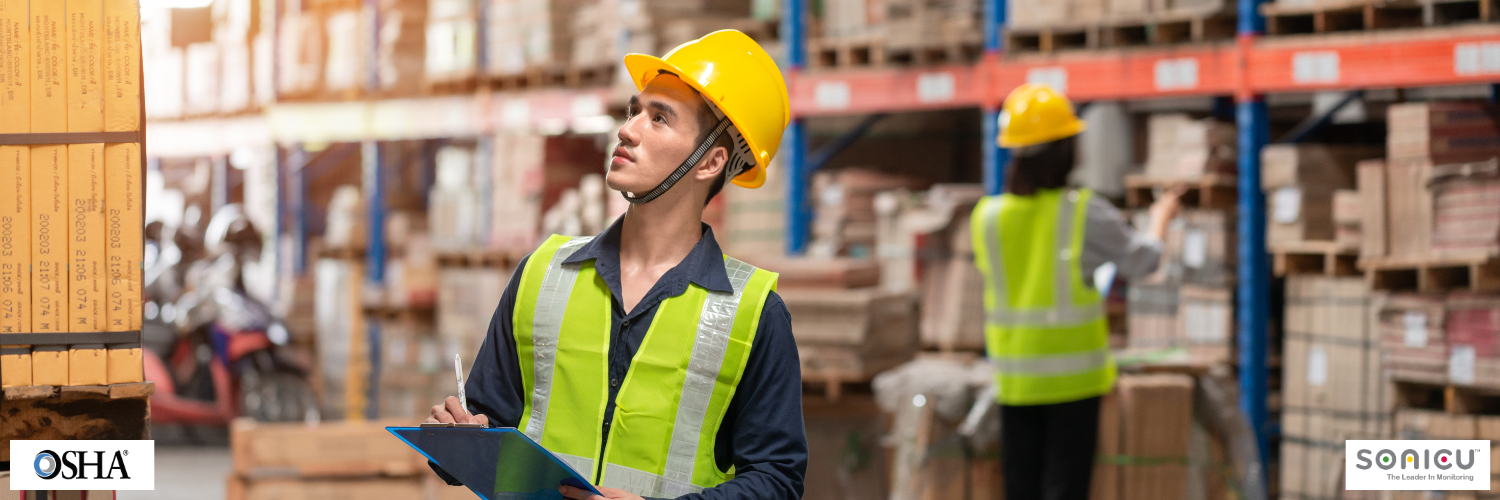
Identifying Open Door Threats in the OR to Reduce Surgical Site Infections
Operating rooms may be among the most tightly regulated environments in healthcare facilities, Sonicy helps ensure they're safe and monitored correctly.
Designed with safety, efficiency and compliance always top of mind, we’ve evolved over a decade with continuous improvements from customer feedback. Serving the healthcare, research and food service industries.
Sonicu offers a comprehensive suite of monitoring solutions
that help organizations safeguard assets, automate compliance and reduce manual processes.
Sonicu offers a comprehensive suite of monitoring solutions
that help organizations safeguard assets, automate compliance and reduce manual processes.
From protecting vaccines and research materials to safeguarding food service and facility operations, Sonicu’s monitoring applications cover temperature, humidity, pressure, and more. Whether you’re in healthcare, life sciences, food safety, or other industries, Sonicu provides visibility, compliance, and peace of mind across all your critical applications.

Understanding Heat Stress and OSHA Regulations: How to Protect Your Employees and Ensure Compliance

Laundry in a healthcare facility is an underestimated part of infection prevention efforts.
Laundry is defined as bed sheets and blankets, towels, personal clothing, patient apparel, uniforms, gowns, scrub suits, and drapes for surgical procedures.
Contamination of these textiles has the potential to be a source of pathogenic microorganisms, though reports of these healthcare-associated diseases are few in number.
While statistics are low, existing control measures are still very effective in reducing the risk of disease transmission to patients and staff.
Contaminated laundry poses a risk for potential infections.
OSHA, the Occupational Safety and Health Administration, defines it as “laundry which has been soiled with blood or other potentially infectious materials or may contain sharps. ”
Soiled or contaminated textiles and fabrics are dangerous, as many diseases can be transmitted through them. Disease transmission that is attributed to inappropriately handled, mainly shaken, contaminated fabrics includes bacteria, viruses, fungi, and ectoparasites.
In order to avoid serious illness, contaminated textiles must be properly removed, cleaned, and stored through specific processes in OSHA regulations (1).
Removal is the first and essential step toward reducing the risk of infection with contaminated laundry. When removing soiled linens, personal protective equipment that is normally worn when dealing with high-risk patients must also be worn by all persons handling the textiles (1).
The linen must be contained, preferably through double bagging, before removal from the patient's room. When bagging, these bags must be securely tied or closed in order to prevent leakage.
If the contaminated laundry is wet, leak-resistant contamination methods must be used. The contaminated laundry should not be shaken or disturbed in a way that could aerosolize infectious particles (2).
Sorting and rinsing contaminated laundry at the location where it occurred is prohibited by OSHA. Sorting of contaminated laundry must occur outside of the place where the fabrics are originally from. Once the bags are off the premises of contamination, there must be an organizational system in place.
Within this organizational system, there must be identifying labels, color-coding, or other methods where workers can properly distinguish between contaminated and fresh linens.

The Many Benefits of Sorting
Sorting before and after washing minimizes the exposure of laundry workers to infectious material in soiled fabrics, prevents potential injuries, and reduces airborne microbial contamination in the laundry area.
Infectious material includes hard objects, such as the patient's property, needles, and syringes. Removing these materials with the use of protective apparel and gloves reduces the risk of recontamination.
Sorting also benefits workflow, as segregating soiled fabrics by product type increases work efficiency.
Intricate Cleansing Process for Soiled Fabrics
Laundering cycles consist of a flush, main wash, bleaching, rinsing, and souring. The laundering process includes antimicrobial action that is a result of a combination of mechanical, thermal, and chemical factors.
Soaps and detergents work to suspend soils and contain microbicidal properties. Thermal factors have an essential role in the cleansing process, as hot water is effective in destroying microorganisms.
A minimum temperature of 160℉ (71℃) for a 25-minute cycle is recommended for hot-water washing. These thermal recommendations, combined with chlorine bleach, are recommended for hot-water laundering processes.
The use of chlorine bleach assures extra safety and infection-preventative measures. Chlorine bleach, which activates in hot water, is a broad-spectrum chemical germicide that enhances the effectiveness of the laundering process.
While it is useful, it is not recommended for flame-retardant fabrics, linen, and clothing, as it reduces the flame-retardant properties of the fabrics. Though some flame-retardant fabrics can withstand chlorine, these fabrics must be thoroughly rinsed, as many detergent residues are capable of supporting combustion.
Chlorine alternatives, such as activated oxygen-based laundry detergents, are recommended as they benefit both fabric and color safety and antimicrobial activity.

The Importance of Storage
After the clothing is cleansed, folded, and properly packaged, there must be adequate storage and transportation methods. Clean clothing that is uncovered should be placed in clean locations for a short period of time.
Once the clothing is covered, it may be transported from the laundry to the healthcare facility in vehicles that are organized. The use of physical barriers and space separations is deemed to be effective in keeping clean/sterile items from contamination.
Once these fabrics arrive at healthcare facilities, they must be stored in sterile locations (1).
Clean storage rooms should be protected and monitored for damaging flood factors, including temperature, humidity, and damage. Storing clean textiles and linens with soiled items or devices such as refrigerators that include fans, condensation, or generate heat should be avoided.
Contamination can also be prevented by ensuring that covers and cabinets are properly closed (2).
A major part of the laundering process that is often overlooked is the proper maintenance of machines. Washing machines and dryers are heavily used in hospitals and other healthcare settings and require constant disinfection procedures.
Disinfection procedures must include the following: the physical removal of bulk solids (i.e., feces and personal belongings) before the wash/dry cycle and proper use of temperature, detergent, and laundry additives.
Outside of machine maintenance, there are certain fabrics that must be sterilized and hygienically cleaned with “special laundry situations.”
Items, such as surgical drapes and reusable gowns, must be sterilized before use and require steam autoclaving after laundering. Though the American Academy of Pediatrics recommends autoclaving for linens in neonatal intensive care units, studies did not show any increased risk for infection among neonates receiving care.
Another issue of concern regarding these fabrics is the argument of disposable versus reusable surgical attire and fabrics. Surgical gowns and drapes must be registered with the FDA to demonstrate their safety and effectiveness.
Overall, there are many guidelines and procedures in place for clean linens.
Hospital management that is truly patient-oriented and focused on good patient outcomes is a result of effective and efficient medical care alongside hygienic food, clean linen, a safe environment and atmosphere, and good interpersonal relationships.
Laundry is an important service that not only ensures the prevention and containment of hospital infections but is a determining factor for the maintenance of a good image of a hospital.
All healthcare facilities must continue to work to ensure that proper procedures for laundry services are followed, especially at a crucial time when infections are a prominent part of society (3).
Sources:
Subscribe to our newsletter for expert insights, product updates, and strategies to keep your operations running smoothly.

